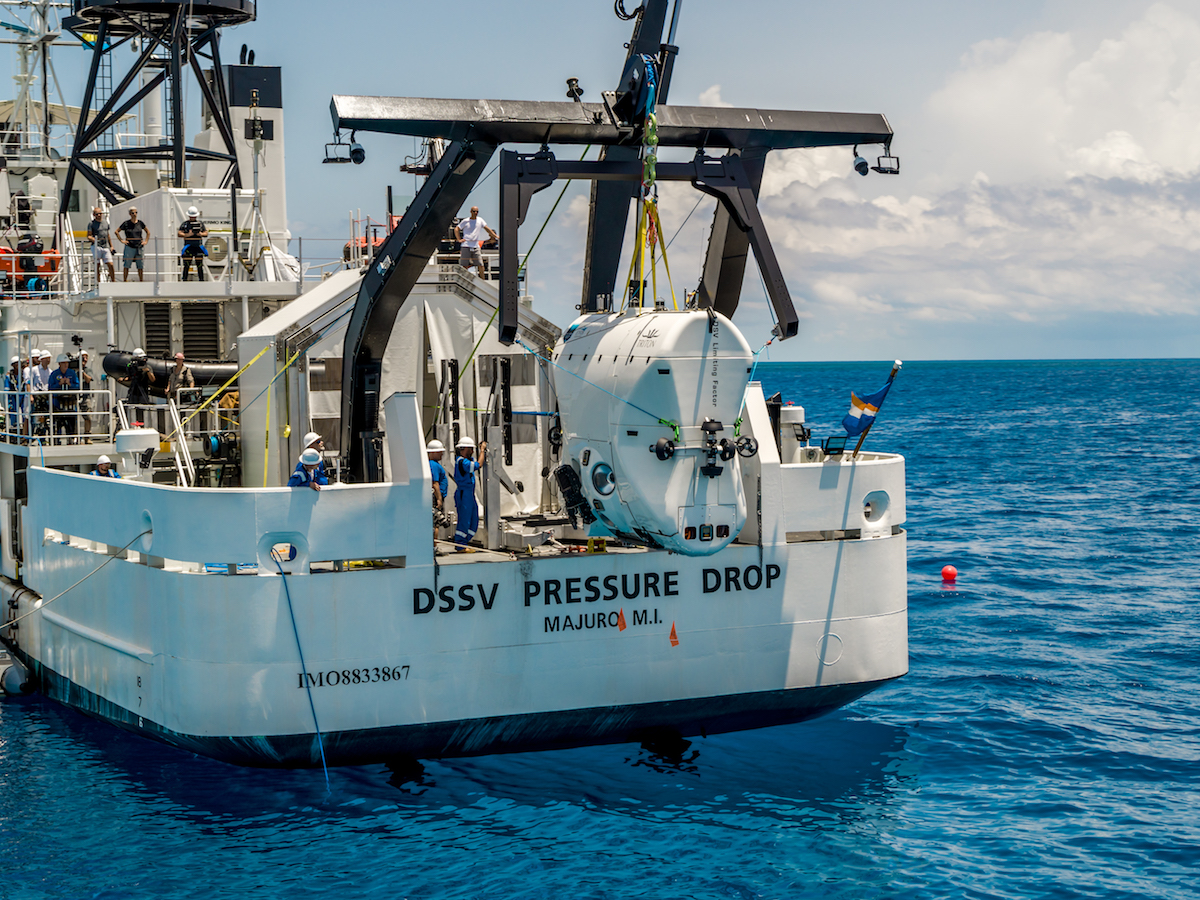Explorers reach the deepest point in the Red Sea
-atlantic-productions.jpg?sfvrsn=6f5819f8_1)
The state-of-the-art full ocean depth submersible DSV Limiting Factor recently dove two deeps in the Red Sea, the Suakin Trough and the Kerbit Deep, with the assistance of undersea explorer Victor Vescovo and the KAUST Coastal and Marine Resources Core Lab. Image courtesy of and copyright Atlantic Productions.
After successfully diving to the deepest point in the Mediterranean Sea, the Calypso Deep, in mid-February, Victor Vescovo and the Caladan Oceanic crew sailed through the Suez Canal and into the Red Sea. In cooperation with KAUST, Caladan made multiple manned dives into the little-explored Red Sea and—for the first time—to its deepest point: the Suakin Trough. The team also dove the shallower but scientifically important Kebrit Deep (Arabic for "sulfur"), 250 miles to the north.
Utilizing the state-of-the-art full ocean depth submersible DSV Limiting Factor from Triton Submarines, Vescovo dove two deeps: the Suakin Trough (at 2,777 m/9,111 ft) and the Kerbit Deep (at 1,470 m/4,823 ft), making him the first person in history to physically reach the points in the Red Sea. Accompanying Vescovo for the first dive at the Kerbit Deep was Dr. Alan Jamieson from Newcastle University, who acted as an observer for the five-hour mission.
Undersea explorer Victor Vescovo stands next to the high-tech full ocean depth submersible DSV Limiting Factor. Photo by and copyright Tamara Stubbs.
The Suakin Trough and Kebrit Deep exhibit remarkably unique characteristics, as both have "brine lakes" on the seafloor that are significantly different in character than the seawater above them. The feature creates distinct "shorelines" underwater between the regular seawater on top and the ultra-dense brine pools that settle in the centers of the Deeps.

Explorer Victor Vescovo (left) and Mohammed A. Aljahdli (right), an engineer from the University's Coastal and Marine Resources Core Lab, were the first to descend to the bottom of the Red Sea's Suakin Trough. File photo.
"It was wonderful to join a young Saudi Arabian national to the bottom of the Red Sea in a manned submersible—for the first time in history," Vescovo said. "We also believe this will make him the deepest-diving Saudi of all time. As we continue this year's expedition into the Indian and Pacific Oceans, we hope to explore as many new areas as possible with this, the deepest diving system on the planet, and investigate the 90 percent of the ocean that remains unexplored."
.jpg)
Victor Vescovo is pictured here working inside of the full ocean depth submersible DSV Limiting Factor, 'the deepest diving system on the planet,' he stated. File photo.
"In order to protect this important resource, we need to understand it, and partnering with Victor [Vescovo] has given us the opportunity to observe and sample the deepest and most inaccessible regions like never before," Mynar noted.

The DSV Limiting Factor is dropped into the ocean to conduct explorations from the vessel pictured here. Limiting Factor is able to journey to any place and depth in the oceans with human occupants inside of it. File photo.
For more information, visit caladanoceanic.com and follow them on Twitter @CaladanOceanic, Instagram @CaladanOceanic and Facebook @CaladanOceanic for ongoing updates.
Related stories:
- Saudi Arabia produces remotely operated vehicle pilots to navigate new seas
- Oceanography with international caliber
-
The world's living oceans

